Metro-Goldwyn-Mayer made a lot of noise about their new
system long before it really existed. For this reason there are countless otherwise reliable
information sources that incorrectly document what came to be called M-G-M Camera 65.
The system was conceived as being quite similar to Todd-AO but with two differences. First,
the filming speed was maintained at the standard 24fps rate, (Todd-AO would switch to this speed
in 1958).
The second difference was that the lenses were anamorphic rather than spherical.
Testing during development changed the anamorphic compression factor from about 1.4:1 to 1.33:1
to 1.25:1. Most information for that period documents the compression as being 1.33:1. All the
Camera 65 lenses are still in existence today and are indeed marked 1.33 anamorphosis.
In fact the system was designed for a squeeze of 1.25:1 but the markings were incorrect due to a math error on the part of some unknown person. M-G-M Camera 65
(Metro's name for the format, Robert Gottschalk called the system Ultra Panavision from its inception) used
a 1.25:1 anamorphic compression with a frame size identical to Todd-AO, yielding an image with a
total aspect ratio of 2.76:1, the most extreme of all the various widescreen systems developed
to date, though it was intended that both 70mm and 35mm prints use an aspect ratio of 2.5:1 (MGM shorthand for 2.55:1). A number of publications discussing this system referred to it as MGM Panavision, which was the way it was internally identified by Douglas Shearer of MGM in early documents. It was also what was painted on the front of an early sound blimp that was used before the beautiful aluminum blimp designed by Takuo 'Tak' Miyagishima of Panavision had completed construction.
It should be noted that ultra high quality 35mm anamorphic reduction prints were
considered a primary goal of the system and use of the 65mm cameras with spherical lenses was
considered an option from the very beginning. Since flexibility in producing prints in a variety of formats was a key factor in the design of MGM Camera 65/Ultra Panavision, the exceptionally wide 2.76:1 aspect ratio was more a matter of insurance than a specification for projection. The first film in the process, Raintree County, was printed only in CinemaScope compatible 35mm with either optical sound or Magoptical sound, with a maximum aspect ratio of 2.35:1. The second film, Ben-Hur, ran in 70mm roadshow for over a year. While it was possible to use the entire 2.76:1 image on the theatre screen, as a matter of practice the ratio was kept at about 2.5:1 so that theatres weren't required to install new wider screens or curtail the height of those already installed. Initial 35mm anamorphic prints were matted to yield a 2.5:1 aspect ratio with Magoptical soundtracks. So despite the total 2.76:1 aspect ratio, critical information was kept within an area of 2.35 to 2.5:1. There is evidence that "Ben-Hur" played in 70mm in its premiere engagement in certain theatres with prints optically created to conform to the Todd-AO 2.21:1 ratio. There is no scene in Ben-Hur that would be seriously compromised by this width reduction.
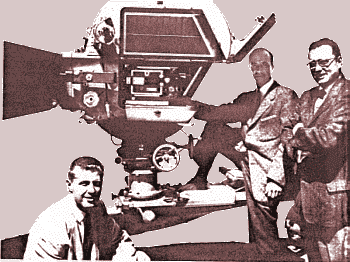 Big Camera - Big Picture
Big Camera - Big Picture
Circa 1957 photo of the first 65mm Panavision camera used on Raintree County, Ben-Hur, (with anamorphic lenses), and The Big Fisherman, (with spherical lenses). Seen with the camera, from left to right, are early Panavision partner Richard Moore ASC, later to become a highly respected director of photography, Robert Gottschalk, founder, and Meredith Nicholsen, who worked as a second unit camera operator on Ben-Hur and later became a very successful director of photography on many TV series.
The camera was a Mitchell movement, an "FC", installed in Tak's 300 pound blimp, whose design shows it was patterned after those built by the MGM camera department. By 1960, the unit would shrink significantly in size and weight, (see Exodus coverage in the Super Panavision 70 section).
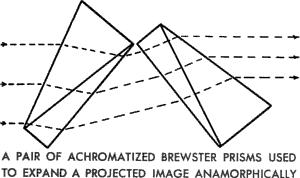
Anamorphic compression and expansion can be achieved through many different optical schemes. Panavision's initial work began with prisms, which have certain optical advantages over lenses and may offer adjustment in projection, but they are generally much larger.
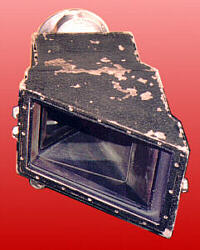
The APO Panatar lenses designed
for Camera 65/Ultra Panavision used a prism arrangement to impart the anamorphic squeeze rather
than cylindrical lens elements. The prisms account for the odd shape of the lens front elements.
Pictured in these two photographs is a 75mm "normal" lens. Despite the condition of the
wrinkle paint finish on the cast aluminum housing, it will still take some of the sharpest
pictures of any lens produced for large format films. This lens was assigned to the "A"
camera. It was the most extensively used lens on the production of Raintree
County and Ben-Hur.
Ultra Panavision APO Panatar lens, The American WideScreen Museum Collection
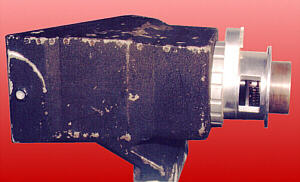
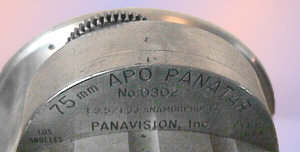
While the lens has a squeeze factor of 1.25:1, it still retains the inscription "1.33 anamorphosis" from the early developmental stages.
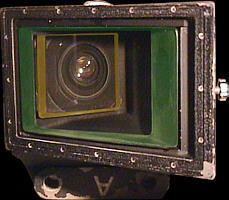
Peering into the front of the original Camera 65 lens
Camera 65/Ultra Panavision lens with the edges of the front prism highlighted in green. The rear prism is highlighted in yellow. If you're color blind, the prisms are highlighted in gray. The picture is not upside-down. The lens sits in its case upside down so the letter "A" is upright when the lens is stored.
The specifications and technical requirements for MGM Camera 65 were firmly established by August, 1956 when small reports such as these began circulating.
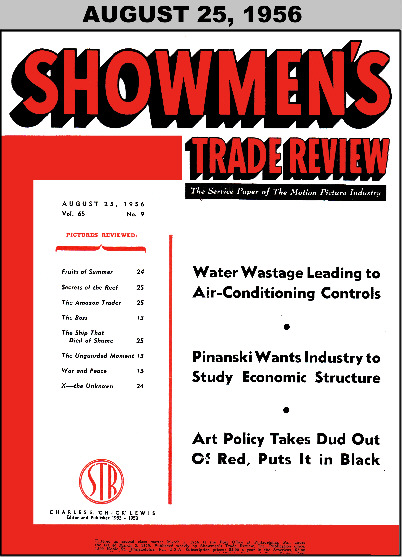
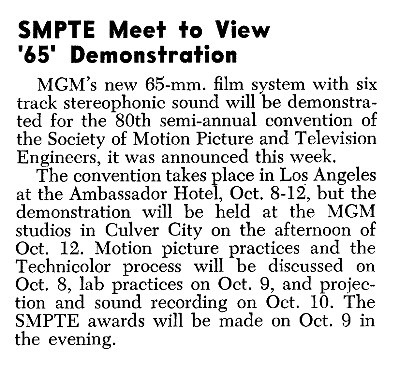
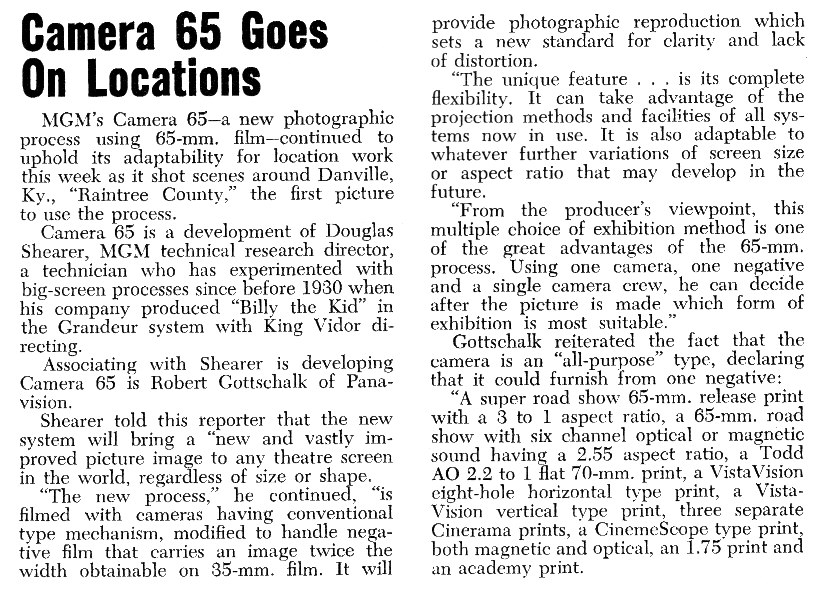
"It ain't heavy Father, it's my Camera 65"
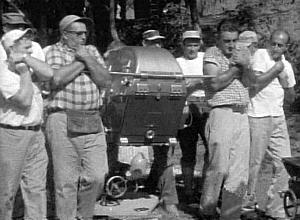
Only eight crew members were required to lift the blimped Camera 65 onto a camera mount. And it looks like those eight guys are barely able hold it. Photo from the Raintree County location set.
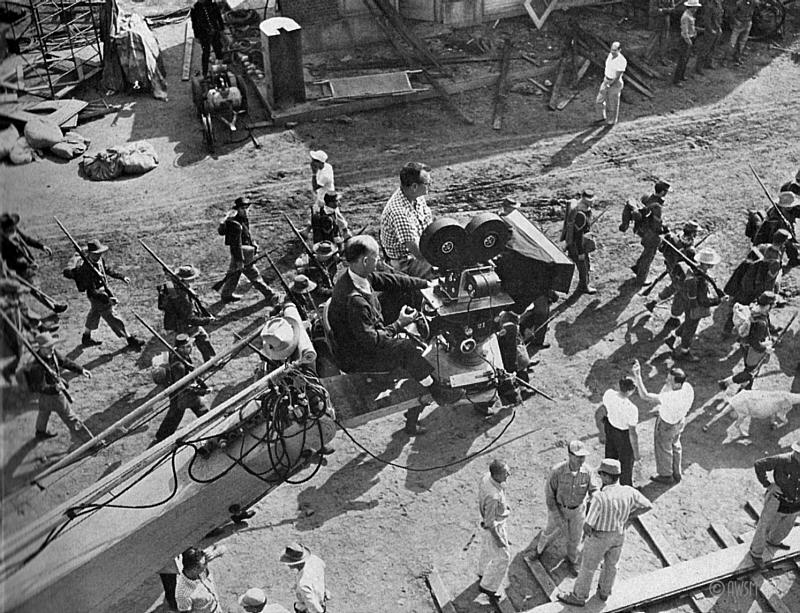
Above: Director of photography Robert L. Surtees, (behind camera) and camera operator Meredith Nicholsen plan a shot for Raintree County from the extended Chapman crane.
Panavision contracted with Mitchell Camera Corp. to build a 65mm camera. Metro dug several 70mm cameras out of storage, (they had been used on a few films in 1929-1930 in their Realife system.),
and had Mitchell convert them for use with 65mm Eastmancolor negative. Ultra Panavision was
ready for use before the studio was ready to begin filming Ben-Hur.
In 1957 the new system was used to produce the studio's Raintree County
. M-G-M distributed the film only in 35mm reduction prints, claiming that all available
70mm projectors were tied up showing Mike Todd's Around The World In 80 Days.
Of course the projectors were tied up. After all, they were built for Todd-AO and only one film was running in that process so it's obvious that extra 70mm projectors didn't just appear out of thin air.
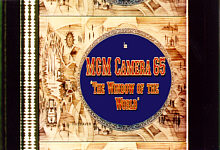
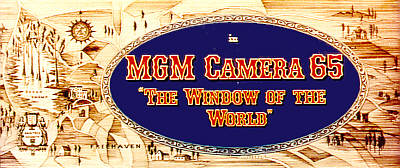
Above left, an IB Technicolor 35mm anamorphic print. Above right, the same frame as projected with conventional CinemaScope compatible optics. The aspect ratio for this print was 2.35:1. You won't see this title card in the current HD video transfer. For some reason it was removed from the negative. It was still in place when the first pan and scan video transfer was made in the late 1960s. We have no idea why it was removed.
Raintree County frame courtesy of Richard Ducar
Eva Marie Saint apparently had a passion for cinematography or really big cameras. See the Raintree County gallery and the VistaVision section for more.
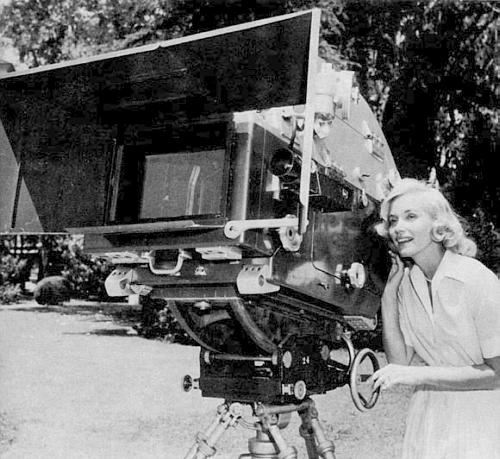
Photo courtesy of Robert C. Weisgerber
You are on Page 2 of 





Read the complete text of the Ultra Panavision article written for
WideGauge Film and Video Monthly